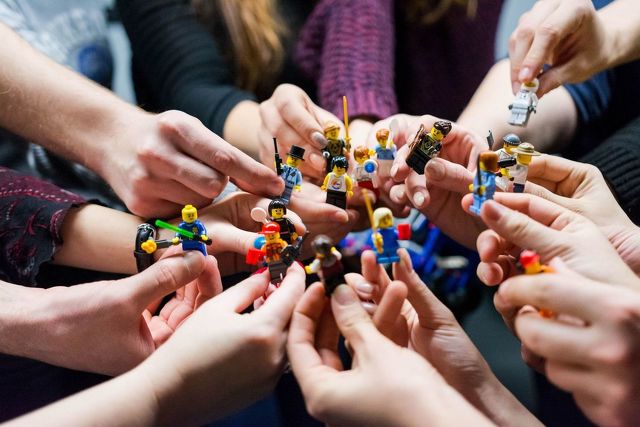The lean approach was devised in the early 2000s. Its key features are formulating hypotheses about different aspects of the business and testing each hypothesis by interviewing potential clients and consumers. In this methodology, pushing testable prototypes to the customers is also an effective way to validate an idea.
Using this method, teams can avoid devoting time and energy to ideas that won’t work in the real world, and instead emerge with a viable plan of attack. This approach has taken the entrepreneurship world by storm. Established companies such as Dropbox, Slack, or even Nike have embraced it to rapidly test and refine ideas for products or businesses.
Educationally diverse teams are the first step. (source: unspalsh.com)
In a recent Strategic Entrepreneurship Journal article, researchers published the first study to experimentally test the key assumptions of lean startup by having a specific focus on the composition of the startup team. Using unique and detailed longitudinal data on 152 NSF‐supported lean‐startup teams, they have found that the key components of the method — hypothesis formulation, probing, and business idea convergence — link up as expected. They have also found that team composition is an important boundary condition: formal training in learning‐by‐thinking methods – such as business‐educated members (MBAs) - appears to limit the spread of learning‐by‐doing methods. In this way, business theory constrains business practice.
You may wonder why it is so. Learning‐by‐thinking methods use mental representations of the environment to plan how a firm's solutions address problems. Learning‐by‐doing methods are based on taking action and learning from experience. The three main approaches of learning-by-doing are trial‐and‐error, bricolage, and experiment.
- In trial‐and‐error, many ideas are tried in the hopes of stumbling upon a promising one.
- In bricolage, solutions that already exist at hand are combined in new ways.
- Experiment, the third major learning‐by‐doing approach, is based on testing hypotheses with somewhat controlled – or alternatively, light‐weight experiments lacking controlled – circumstances.
Jake Knapp’s Sprint is its step-by-step breakdown of what it takes to solve big problems and do work that matters with speed and urgency (source: unspalsh.com)
Teams with MBA members who started using the components of the method (particularly in customer interviews) were more likely - relative to teams without MBA members - to improve the teams’ business ideas. This facilitates benefits if we get MBAs to embrace the method in the first place. So, if you are a business school alum, prepare for some discomfort at first — but know your skills will give you a boost when it comes time to analyse the results of your probe.
Besides, educational diversity seems to have an impact in the model, too. First, overconfidence in the team's existing approach and overoptimism regarding initial business ideas occurs more likely when the team is homogeneous. This is because homogeneous teams share a similar domain knowledge and are likely to consolidate their pre-existing beliefs when observing that their teammates have the same beliefs. In contrast, more diverse teams are likely to be collectively less confident and more sceptical in their methods and in their starting position, because of the lack of consensus about a given domain of knowledge.
Therefore, the presence of educational diversity in the team would go hand‐in‐hand with a predisposition to engage in probing. Second, educationally diverse teams can more easily envision access to a broader set of potential stakeholders, making it mechanically easier for such teams to engage in hypothesis probing. Third, by having a broader knowledge‐base and stakeholder arena to build on, educationally diverse teams are likely to have a broader view of the opportunity landscape. This broader view could help diverse teams see both needs and solutions from different perspectives.
Do not forget to test your hypotheses! (source: unspalsh.com)
Finally, when it comes to developing hypotheses, it is worthy to focus on quality, not quantity. Keep in mind, that it is much easier to probe a few clear, thoughtful hypotheses than lots of vague, slapdash ones.
Sources:
Harward Business Review: To Make Lean Startups Work
Leatherbee, M., & Katila, R. (2020). The lean startup method: Early‐stage teams and hypothesis‐based probing of business ideas. Strategic Entrepreneurship Journal, 14(4), 570-593.






